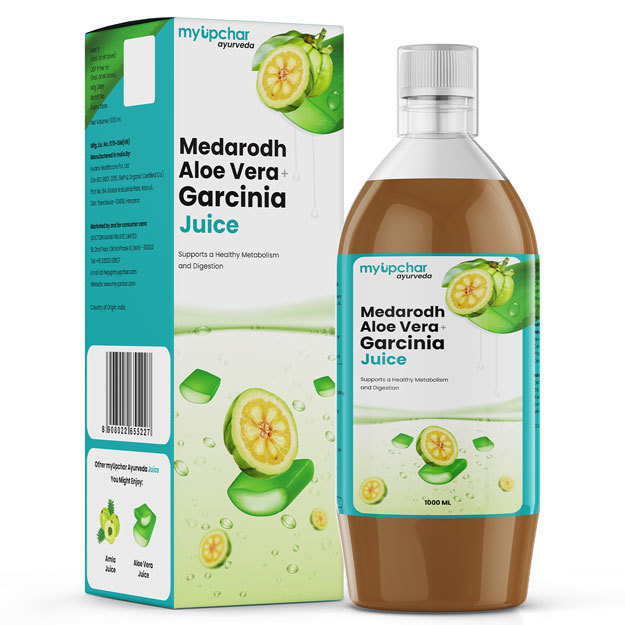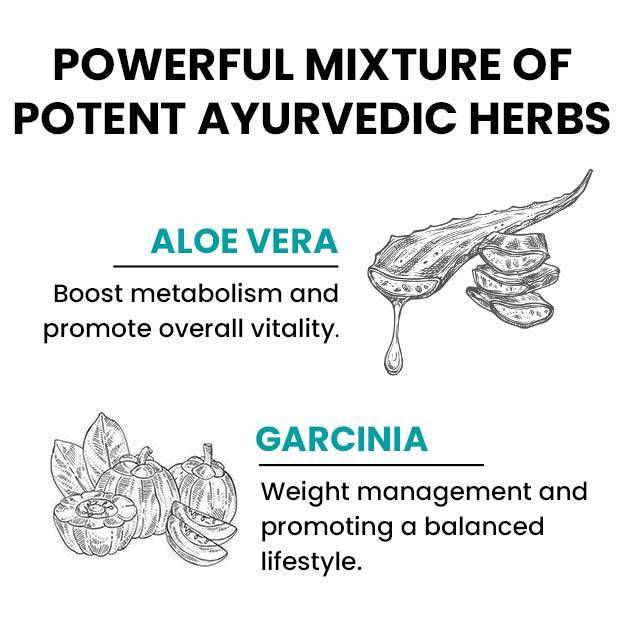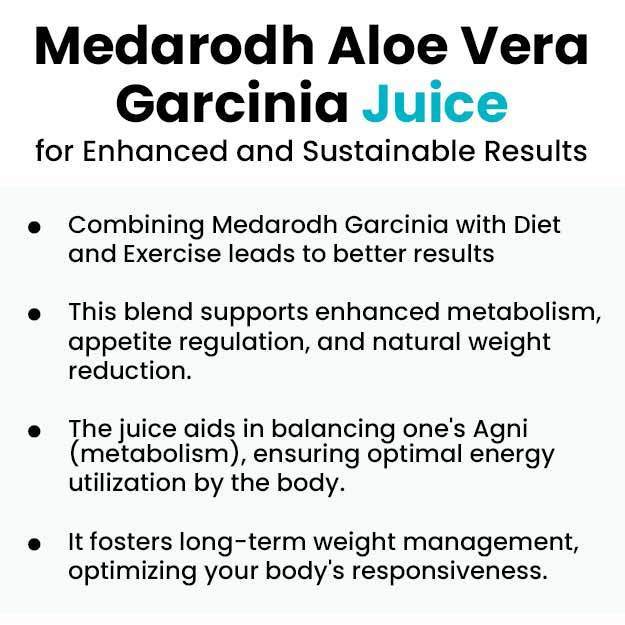Motte-coloured and oval in shape, chia seeds are obtained from the chia plant, Salvia hispanica. Usually 1 millimeter in diameter, these tiny seeds are a storehouse of energy. In fact, they derive their name from an ancient Mayan word for strength. According to some historians, chia seeds were first cultivated by the Aztecs tribes which are were located somewhere around the modern day Mexico and Guatemala. The energy building properties of chia seeds were considered so sacred by these American Indian tribes that it was an apt offering for Aztec priests.
Today, chia seeds are also commercially cultivated throughout South America, Central America, and Australia.
Apart from having a rich history, the many health benefits of chia seeds have quickly gained it the title of a modern superfood. These seeds are not only rich in Omega-3 fatty acids and fibers, but they also have a high content of antioxidants, vitamins, and minerals. So, they not only nourish your body but they can also help you fight against various conditions like digestive disorders, cardiovascular diseases, and hypertension. Looking at all of these nutritious and health building, it is not hard to believe that chia seeds a truly a functional food.
Some basic facts about Chia seeds
- Botanical name: Salvia hispanica
- Family: Labiatae
- Other Names: Mexican chia or Salba chia
- Native region and geographical distribution: This native plant of Mexico and Guatemala is also commercially cultivated in Argentina, Australia, Bolivia, Ecuador, Nicaragua, Peru and the United States.
- Fun Facts: Joe Pedott from Joseph Enterprises Inc, a California based company, marketed animal-shaped terracotta figurines to sprout chia. After watering for a couple of weeks, he sprouted Chia plants which resembled the fur or the hair of the animal figurine. In 2007, about 5,00,000 of these Chia Pets were sold as a house novelty in the US.
- Chia seeds vs sabja seeds
- Chia seeds nutrition facts
-
Chia seeds health benefits
- Chia seeds for weight loss
- Chia seeds for celiac patients
- Chia seeds prevent cancer
- Chia seeds are excellent antioxidants
- Chia seeds for nursing mothers
- Chia seeds for skin
- Chia seeds as an anti-inflammatory
- Chia seeds for heart
- Chia seeds reduce blood pressure
- Chia seeds for digestion
- Chia seeds for diabetes
- How to use Chia seeds
- Chia seeds side effects
- Takeaway
Chia seeds vs sabja seeds
Most people confuse chia seeds with sabja seeds. But sabja seeds and chia seeds are entirely different from each other.
- Chia seeds are obtained from the chia plant but sabja seeds are obtained from a variety of basil.
- While chia is a native of America, basil is an Indian plant.
- Chia Seeds are mostly grey to brown coloured with black and white spots, while sabja seeds are usually black.
- Chia seeds are a bit bigger in size as compared to sabja seeds.
- Chia seeds are oval in shape but sabja seeds have a teardrop shape.
Chia seeds nutrition facts
Chia seeds are considered to be a rich source of alpha-linolenic acid which is an Omega-3 fatty acid with its source in plants. Nearly half the contents of dried chia seeds are carbohydrates. Besides, they also contain proteins, a wide range of antioxidants, fats, and dietary fibre. The seeds are found to have higher quantities of calcium, potassium, and magnesium than milk. In fact, the European Union has accepted chia as the novel food and the European Parliament has declared chia seeds to be a functional food. Both these titles have made chia seeds very popular in developed countries like Japan, Canada, New Zealand, and Australia.
According to the USDA Nutrient Database, chia seed contains the following value:
| Nutrient | Value per 100g |
| Water | 5.80 g |
| Energy | 486 kCal |
| Protein | 16.54 g |
| Fats | 30.74g |
| Carbohydrate | 42.12g |
| Fibre | 34.4g |
| Minerals | |
| Calcium | 631 mg |
| Iron | 7.72 mg |
| Magnesium | 335 mg |
| Phosphorus | 860 mg |
| Potassium | 407 mg |
| Sodium | 16 mg |
| Zinc | 4.58 mg |
| Vitamins | |
| Vitamin C | 1.6 mg |
| Vitamin B1 | 0.620 mg |
| Vitamin B2 | 0.170 mg |
| Vitamin B3 | 8.830 mg |
| Vitamin A | 54 mg |
| Vitamin E | 0.50 mg |
| Fats/Fatty acids | |
| Saturated | 3.330 |
| Monounsaturated | 2.309 |
| Polyunsaturated | 23.665 |
| Trans | 0.140 |
Chia seeds health benefits
The craze for a healthy lifestyle has increased a lot in recent years. Right from following different exercises to exploring various diet regimes, people are open to exploring any new option. In such times, artificial supplements are a lot in demand. However, as the adverse effects of these are highlighted, nutritionists are quickly moving towards natural supplements. Chia seeds are considered to be one of the most nutritious seeds in the world and they are also very helpful in maintaining the various body functions. Hence, chia seeds are often referred to as superfood or functional food.
The seeds are rich in alpha-linolenic acid and Omega-3 fatty acids, which are very beneficial for heart health. The dietary fibre, superior quality proteins, antioxidants, minerals and vitamins in chia seeds also help combat digestive disorders, mental disorders, diabetes. It is also considered to be anti-inflammatory, anti-anxiety, and anti-blood clotting agent. From the studies conducted on chia seeds, it is evident that a healthy lifestyle behaviour along with varied plant-rich diet including chia seeds benefits human health.
- Alleviates constipation: Chia seeds are an excellent source of dietary fibre, which is known to relieve constipation by providing bulk to stools and regulating bowel movements.
- Anti-diabetic: Clinical studies demonstrate that chia seeds prevent postprandial (post-meal) spike in blood glucose levels of diabetic individuals. Being easily available and devoid of side effects, it could be an excellent choice of snack for diabetics.
- Anti-inflammatory: Research evidence indicates that chia seeds have some active compounds which reduce swelling and redness in case of inflammatory conditions such as arthritis and bronchitis. Thus providing symptomatic relief to affected individuals.
- Promotes weight loss: Studies suggest that consuming chia seeds with yoghurt as a mid-morning snack, reduces unnecessary snacking and keeps one full for longer. Further, it keeps the total calorie count low, thus promoting weight loss.
- Benefits for skin: Chia seeds and chia seed oil have a soothing and hydrating effect on the skin. It is suggested to reduce itching and scratching and is also found to be effective in relieving eczema symptoms.
- Benefits for nursing mothers: It has been evidenced that chia seed consumption increases the levels of DHA, a type of fatty acid known for its beneficial effects on brain. Not only does it improve brain function in lactating mothers but also it promotes proper brain development in newborns.
Chia seeds for weight loss
A study was conducted on the effects of consuming chia seeds with yoghurt as a mid-morning snack. It was found that the seeds act as hunger satiating and are a healthy option as a snack. This, in turn, reduced the calorie intake and thus improved eating habits. Thus, chia seeds can be used to combat obesity.
If you are tired of dieting and exercising and are not able to lose weight, then use myUpchar Ayurveda Medarodh Fat Burner Capsule, it has no side effects, order it today and avail the benefits.
Chia seeds for celiac patients
Celiac is an autoimmune disorder that leads to a gluten intolerance and gluten-related inflammation in the intestines. Poor intestinal absorption in such patients leads to a deficiency of some important minerals like calcium, phosphorus, magnesium, and zinc. Chia flour is known to be a rich source of nutrients and minerals. According to research, addition of chia flour to gluten-free products may not only help provide these important minerals to celiac patients but it will fulfill other nutritional requirements too.
Chia seeds prevent cancer
Several studies have been done to test the anticancer potential of chia seeds. But the reports are highly controversial. According to a meta-analysis published in the Journal of Epidemiology, Japan, the alpha-linolenic acid (ALA) and PUFA content of chia seed may have some potential as anticancer agents. The study reports that ALA can suppress tumor growth and spread of cancer cells. But, some metabolites of ALA are known to promote tumor and cancer growth.
So, when it comes to the effectiveness of chia seeds in cancer treatment, much more research is still needed to reach any kind of conclusion.
Chia seeds are excellent antioxidants
Antioxidants are compounds which are responsible for fighting against free radical damage and oxidative stress in the body. These free radicals are a kind of oxygen species, generated by the various metabolic functions but an excess of this kind of oxygen can lead to impairment of normal body functioning. A weakened body is easily prone to diseases. Chia seeds are rich in antioxidants and phenolic acids. These properties of the seeds help in increasing immunity and decreasing free radical damage
Chia seeds for nursing mothers
A newborn baby gets all of the nutrition and essential compounds from the mother's milk. Any kind of deficiency in nursing mothers is directly reflected in terms of the neonate's growth and development. Chia seeds are a rich source of alpha-linolenic acid which improves the docosahexaenoic acid (DHA) levels in the body. Now, what is DHA? DHA is a kind of omega-3 fatty acid which is essential for a healthy brain and vision in humans.
A study conducted on expectant and nursing mothers in Chile suggests that consumption of chia seed oil resulted in an increase in DHA when eaten in the first three months of nursing. This would not only be helpful for women but will also help in proper brain development in their babies.
Hence it is highly recommended to consume chia seed oil in the last trimester of pregnancy and in initial nursing months.
Chia seeds as an anti-inflammatory
Inflammation refers to swelling, heat, and redness associated with various diseases like bronchitis and arthritis. Studies suggest that chia seed oil has some polyunsaturated fatty acids (PUFAs) which actively inhibit the function of certain inflammatory mediators in the body (COX-2). Thus consumption of chia seed and oil may be helpful in reducing the severity of inflammation.
Chia seeds for heart
Chia seeds are rich in fiber and alpha-linolenic acid, which are considered very good for heart health. Together, they not only reduce the risk of various heart-related problems like high blood pressure and coronary heart diseases but they also help in keeping the heart healthy. In a research conducted in Canada, Type 2 diabetes patients were subjected to chia seeds consumption for a period of 12 weeks. After 12 weeks it was found that long-term consumption of chia seeds led to a decrease in cardiovascular disease risk factor and also helped maintain glucose level.
(Read more: Heart disease prevention)
Chia seeds reduce blood pressure
A small clinical study was conducted on the advantages of chia seed flour consumption in a group of 26 hypertension patients. Chia flour or placebo was given to the group randomly for a period of 12 days. At the end of the designated period, it was found that consumption of chia flour leads to a decrease in blood pressure in the group receiving BP medication and untreated hypertension patients equally.
(Read more: High blood pressure causes)
Chia seeds for digestion
Chia seeds are a rich source of dietary fibre. Consumption of dietary fibre is an excellent remedy for constipation as it increases the frequency of stools.
However, it does not have any other digestion related benefits.
Chia seeds for diabetes
In a random study conducted on healthy individuals, it was found that consumption of chia seeds lead to a decrease in post-meal blood glucose levels. Unlike other supplements, chia seeds do not have any adverse effects.
Also, the flexibility of usage and consumption of seeds makes it an ideal natural food remedy for controlling blood glucose levels.
How to use Chia seeds
Chia Seeds were extensively used in foods, medicines, cosmetics, etc. by Aztec and Mayan people. Prehistoric societies from Columbia considered it as the second most important product after maize. Whole seeds, grounded seeds and the oil extracted from them were all used for different purposes like in food, medicines, cosmetics and also for religious rituals.
Present day applications of chia seeds include their usage in smoothies, breakfast cereals, energy bars, granola bars, yogurt, and bread. They can also be added to different juices and milk. Chia gel can be used in cake recipes to replace the equivalent of a quarter quantity of eggs or oil. Chia Seeds if consumed whole (with outer covering) are extracted undigested. So, if you want to enjoy the health benefits of chia seeds, it is advisable to grind them before consumption.
Chia seeds side effects
Though the animal and human studies have shown immense uses of chia seeds, the number of studies are scanty. Hence, an adequate research is required to further study the probable side effects of consumption of the seeds in large amounts. However, by correlating different studies, few side effects are be listed below.
1. Chia seeds can have adverse effects on digestive functions
Chia Seeds are a rich source of dietary fibre. While this helps constipation patients, over-consumption of fibre can cause digestive issues such as bloating, gas, constipation, vomiting, etc. So, it is better to drink enough water to digest your daily fiber intake.
2. Chia seeds can result in choking
Chia seeds absorb up to 10-12 times their size of water. Hence, consumption of water immediately after eating whole chia seeds can be risky. In a case study, a 39-year-old man was found to suffer from esophageal obstruction (choking), on drinking water after consumption of chia seeds. It is thus advised to soak chia seeds before serving them especially to children or avoid drinking water immediately after eating seeds.
3. Higher consumption of chia seeds can increase the risk of cancer
One of the main components of chia seeds is Omega-3 fatty acids. In a study, it was found that people with high omega-3 acid content in blood were more at a risk of prostate cancer. However, the studies are conflicting and much more research is still needed in this field.
4. Chia seeds may cause allergies
Like all other food items, some people might be allergic to chia seeds as well. The allergy can lead to symptoms like vomiting, itching, loose motions, difficulty in breathing, etc.
5. Chia seeds may react with some medicines
Chia seeds are known to significantly decrease blood pressure and blood sugar. Hence it is advised not to consume these seeds with diabetes and blood pressure medicine.
Takeaway
Chia seeds were classified as one of the most nutrients foods and termed as superfoods or functional foods. They have extensive health benefits due to the presence of nutrients like alpha-linolenic acids, proteins, antioxidants, minerals, and vitamins. The flexibility of usage as whole seeds, grounded or as oil makes it an ideal food option. It is used in bakery products, as sprinklers in salads or can be consumed as pudding. However, excessive consumption of chia seeds can lead to several side effects. Also, the research on chia seeds are scanty and at times inconclusive. Hence, extensive research on chia seeds as natural supplements is required before an extensive promotion of the food can be done.
Medicines / Products that contain Chia Seeds
- Nisarg Organic Farm Chia Seeds - ₹161
- Keeros Premium Raw Chia Seeds (Black) for Weight Loss 400gm - ₹440
- Swadharma Black Chia Seeds 250gm - ₹360
- Swadharma White Chia Seeds 250gm - ₹360
- Ayurvedix Natural Raw Chia Seeds Rich in Omega-3, Fiber and Antioxidants for Healthy Living 250gm - ₹499
- Havintha Natural Raw Chia Seeds - ₹199
- Pure Nutrition Vegan Protein Powder Cocoa - ₹1999
- The Moms Co Natural Vita Rich Face Cream - ₹699
- The Moms Co Natural Vita Rich Face Serum - ₹699
- HealthOxide Keto Meal Powder - ₹745
- Ahaar Saar USDA Certified Organic Chia Seeds 100gm - ₹395
References
- United States Department of Agriculture Agricultural Research Service. Basic Report: 12006, Seeds, chia seeds, dried. National Nutrient Database for Standard Reference Legacy Release [Internet]
- Ho H et al. Effect of whole and ground Salba seeds (Salvia Hispanica L.) on postprandial glycemia in healthy volunteers: a randomized controlled, dose-response trial. Eur J Clin Nutr. 2013 Jul;67(7):786-8. PMID: 23778782
- Toscano LT et al. Chia flour supplementation reduces blood pressure in hypertensive subjects. Plant Foods Hum Nutr. 2014 Dec;69(4):392-8. PMID: 25403867
- Vuksan V et al. Supplementation of conventional therapy with the novel grain Salba (Salvia hispanica L.) improves major and emerging cardiovascular risk factors in type 2 diabetes: results of a randomized controlled trial. Diabetes Care. 2007 Nov;30(11):2804-10. Epub 2007 Aug 8. PMID: 17686832
- Valenzuela R et al. Modification of Docosahexaenoic Acid Composition of Milk from Nursing Women Who Received Alpha Linolenic Acid from Chia Oil during Gestation and Nursing. Nutrients. 2015 Aug 4;7(8):6405-24. doi: 10.3390/nu7085289. PMID: 26247968
- Hacer Levent. Effect of partial substitution of gluten-free flour mixtures with chia (Salvia hispanica L.) flour on quality of gluten-free noodles . J Food Sci Technol. 2017 Jun; 54(7): 1971–1978. PMID: 28720954
- Rahman Ullah et. Nutritional and therapeutic perspectives of Chia (Salvia hispanica L.): a review. J Food Sci Technol. 2016 Apr; 53(4): 1750–1758. PMID: 27413203
- Jing Yang, Hai-Peng Wang, Li Zhou, Chun-Fang Xu. Effect of dietary fiber on constipation: A meta analysis. World J Gastroenterol. 2012 Dec 28; 18(48): 7378–7383. PMID: 23326148
- Aylin Ayaz et al. Chia seed (Salvia Hispanica L.) added yogurt reduces short-term food intake and increases satiety: randomised controlled trial. Nutr Res Pract. 2017 Oct; 11(5): 412–418. PMID: 28989578
- Yuan-Qing Fu, Ju-Sheng Zheng, Bo Yang, Duo Li. Effect of Individual Omega-3 Fatty Acids on the Risk of Prostate Cancer: A Systematic Review and Dose-Response Meta-Analysis of Prospective Cohort Studies. J Epidemiol. 2015; 25(4): 261–274. PMID: 25787237
- National Research Council (US) Committee on Diet and Health. Diet and Health: Implications for Reducing Chronic Disease Risk. Washington (DC): National Academies Press (US); 1989. 10, Dietary Fiber.






















